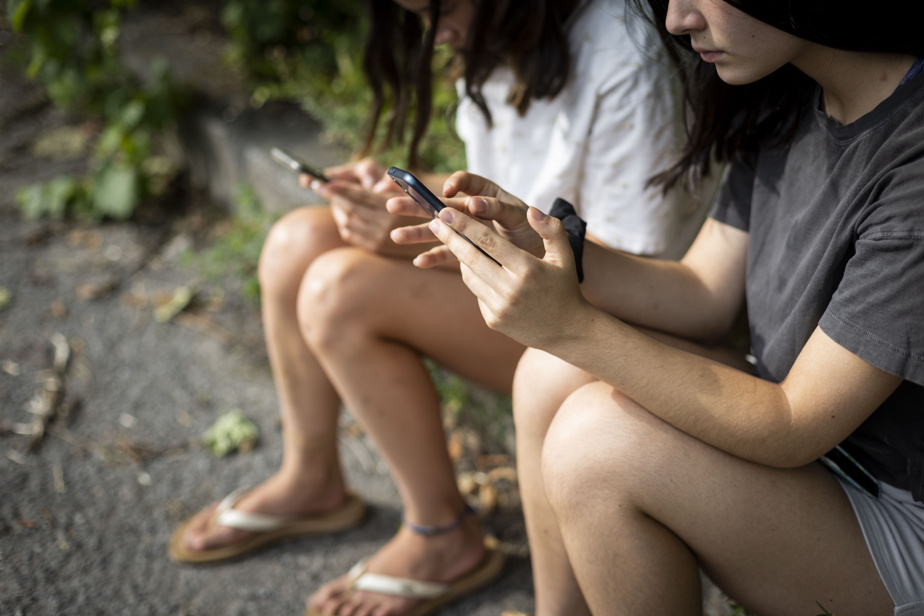The debate on the place of cell phones in our schools and the lives of our children is essential. However, it has a big blind spot: the relationship that adults themselves have with their virtual world.
I reach for my cell phone an average of 80 times a day.
It’s a lot. But it gets worse: according to the statistics compiled by my phone, I can spend a total of more than three hours daily on “social” applications, in my case: Instagram, LinkedIn, Facebook, WhatsAppmessages or even, Slack.
Of course, this time did not pass all together. So I take 80 digital “poffes” per day: I browse, but I don’t always know what I’m doing. I actually never realized how much I check my phone every day.
I ask myself: why do I get lost in my cell ?
You may judge me, but I know I’m not alone: the phone is almost everywhere. Thus, 97% of Americans have a cell phone, and an overwhelming majority of them have a smartphone, according to figures from Pew1. Nearly 68% of American adults use YouTube and Facebook, and 47% use Instagram.
A collective culture forged by our dependencies
So many of us spend hours on our screens, scrolling endlessly through content. Our personal addictions transform our collective culture.
Let’s take the social network which is currently also the most time-consuming of my life, Instagram. I go there to see the lives of others, and also to share mine.
I have taken thousands of photos over the past ten years. Some of them were of course found in one or other of my stories.
Sharing photos is also opening a digital Pandora’s box. It’s hard to resist the temptation to look at how its content performs. And also, as I spend a lot of time on this network, I myself am influenced by what is done there. I also have memories and references that don’t belong to me.
“We learn to create content by consuming content, by looking at what works well with others. It influences the way we talk about our own lives. It’s really a funny way of telling our family lives, of which we are not even aware,” believes Montreal journalist Kathryn Jezer-Morton.
My daughter is getting ready to enter high school. In San Francisco, where I live, many voices are being raised to limit children’s screen time and raise the age at which they join a social network.
It’s a tension that drives American society, like Quebec society: many people think that it has not yet been demonstrated that cell phone use causes mental health problems among adolescents and young adults.
An American social psychologist, Jonathan Haidt, maintains on the contrary that there is a correlation with the advent of social networks in the 2010s. Thus, 28% of young American girls (12-17 years old) have experienced a depressive episode in the last year (an almost constant increase since 2013), according to its figures.
Because I myself transform myself into a digital zombie for several hours a day, I would like to spare my children. But I know that my position is a bit hypocritical: if I find that screens are harmful, why don’t I try to change my behavior?
I am ambivalent. I am not technophobic, quite the contrary. Innovation and digital transformation fascinate me; I also work in tech.
But there are many of us today who are wary of ourselves.
Thus, in the United States, dumbphones – phones with limited functions – seem more and more coveted.
“We have a large clientele. People in their twenties, thirties, forties,” explains Will Stults, an American who set up a store dedicated solely to these phone models, Dumb Wireless. Typically, the person buying is someone who wants to change their behavior and who is hyperdependent on their cell phone. But we also see more and more parents. »
It’s hard to change. But it is more than necessary.
1. View phone usage statistics
Consult the author’s short essay “Scroll Down” on the Pavillons website
What do you think ? Participate in the dialogue

